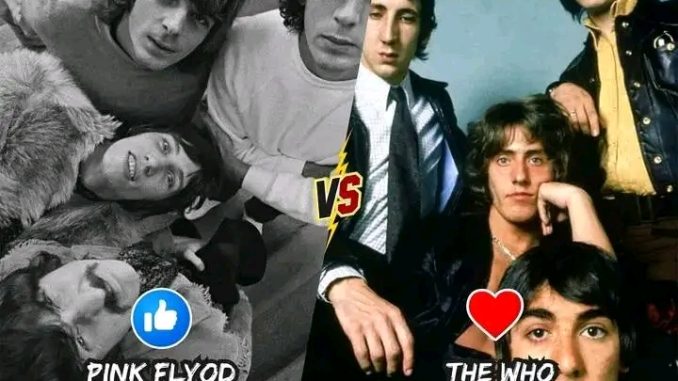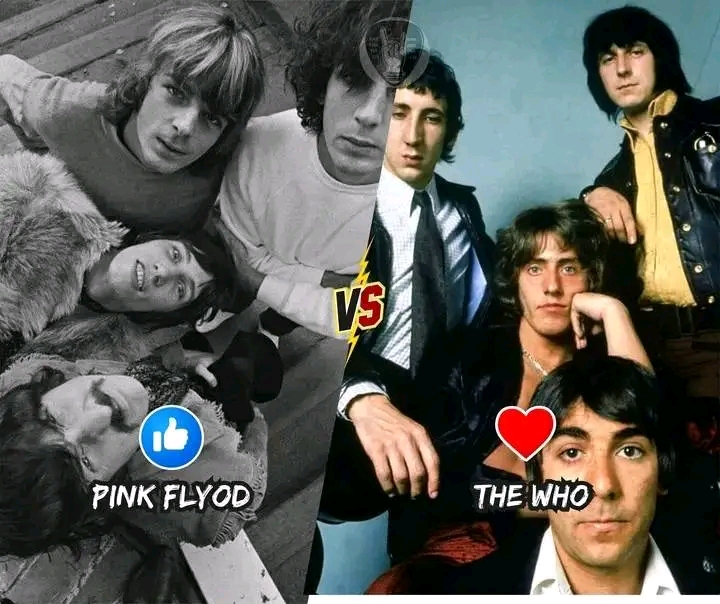
In the pantheon of rock music, few names resonate as profoundly as Pink Floyd and The Who.

Both bands emerged from the British rock explosion of the 1960s, each carving out a distinct sound and identity that would go on to influence generations of musicians and redefine what rock music could achieve. Yet despite being contemporaries, the two groups pursued vastly different creative paths, making comparisons between them a fascinating study in contrasts.
Origins And Early Sounds
The Who, formed in London in 1964, came roaring onto the scene with raw energy, rebellious spirit, and a penchant for smashing guitars. Their early hits like My Generation and Substitute captured the angst of British youth, establishing them as leaders of the mod movement and champions of hard-hitting, anthemic rock.
Pink Floyd, by contrast, emerged in 1965 under the visionary guidance of Syd Barrett. Their early sound leaned into psychedelic experimentation, with whimsical tracks like See Emily Play showcasing their quirky artistry. When Barrett departed due to mental health struggles, the band shifted toward sprawling, atmospheric compositions led by David Gilmour and Roger Waters.
Conceptual Approaches
Where The Who specialized in high-voltage anthems and pioneering the concept of the rock opera (Tommy in 1969, Quadrophenia in 1973), Pink Floyd became synonymous with sonic landscapes, existential themes, and elaborate concept albums such as The Dark Side of the Moon and The Wall.
The Who’s music often dealt with identity, rebellion, and social commentary, filtered through Pete Townshend’s sharp songwriting. Pink Floyd, however, probed deeper into philosophical terrain, alienation, madness, the human condition—crafting albums that played as single continuous journeys.
Stage Presence And Performances
The live performances of the two bands further highlight their differences. The Who were ferocious on stage, driven by Keith Moon’s wild drumming, Townshend’s iconic windmill guitar moves, and Roger Daltrey’s commanding vocals. Concerts often felt like controlled chaos, punctuated by the infamous destruction of instruments.
Pink Floyd’s shows, in contrast, emphasized grandiosity and immersion. They pioneered the use of laser light shows, giant inflatable props, and quadraphonic sound systems. While less about raw energy, their concerts were visual and sonic spectacles designed to transport audiences into another realm.
Legacy And Influence
Both bands left indelible marks on rock history. The Who helped define hard rock and punk attitudes, inspiring bands like The Clash, Pearl Jam, and Oasis. Pink Floyd expanded the boundaries of what rock could be, influencing progressive and alternative acts from Radiohead to Tool.
Commercially, Pink Floyd reached stratospheric success with The Dark Side of the Moon, which spent over 900 weeks on the Billboard charts. The Who, though less commercially dominant, are revered for their role in shaping rock’s theatrical and rebellious essence.
Conclusion
Pink Floyd and The Who represent two different sides of the same coin. The Who embodied raw power, rebellion, and the rock ’n’ roll spirit of smashing boundaries, literally. Pink Floyd embodied introspection, innovation, and the transformation of rock into an art form.
To ask who was greater is perhaps to miss the point. Both bands stood as visionaries, each defining what rock could mean in their own way. Together, they prove that rock’s power lies in its diversity, whether in the sound of a smashed guitar or the echoes of a cosmic synth.
Leave a Reply